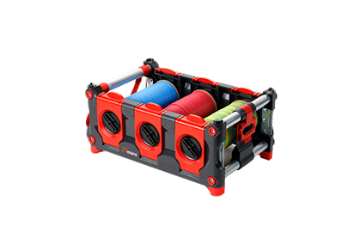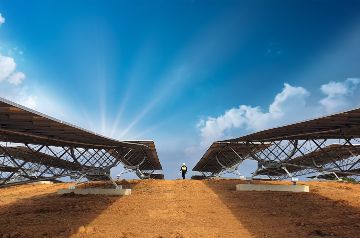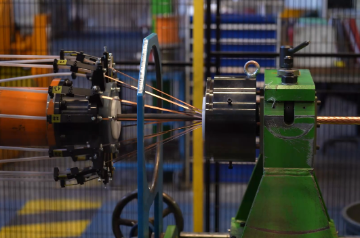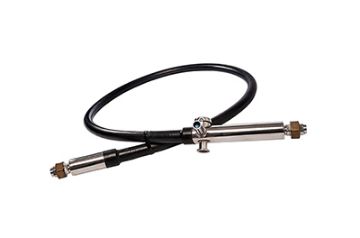- Markets
- Products
- Services
- News
- Tools & Resources
- About Nexans
- Search
- Contact us
- Compare
- Sign in
Superconductivity
Transforming energy infrastructures thanks to superconducting systems
Sep 25, 2025
Nexans took part to the 17th European Conference on Applied Superconductivity (EUCAS2025) that was held from the 22nd to the 25th of September in Portugal. EUCAS has been for more than three decades a premier event for the dissemination, discussion, and knowledge exchange of breakthroughs and state-of-the-art developments across the several domains of applied superconductivity.
Superconductivity disrupted several scientific and technological applications, such as health, energy, basic research, and high-performance computing, among many others. Aging and overloaded electrical grids demand innovative solutions — and superconducting power cables offer a very attractive alternative. With exceptionally high ampacity in a compact design, these cables are especially valuable in urban areas where space is limited. Their smaller diameter gives them a significant advantage over conventional cable systems.
Nexans has been leading the way in superconducting technology for years, providing end-to-end superconducting solutions, from initial concept to deployment and commissioning. EUCAS 2025 marked another opportunity to showcase this expertise and how this technology can contribute to shape the future of electrical networks and infrastructures.
More information about superconducting systems:
Revolutionizing power transmission networks
Superconductivity is increasingly being utilized in industrial applications with notable potential to reshape and revolutionize power transmission including rail networks.
During the session “Industry-led projects on superconducting power cables: driving innovation and adoption”, several major advances were presented on the scale-up towards the industrialization of superconducting cables, among which the latest SuperRail project.
More information about superconducting systems:
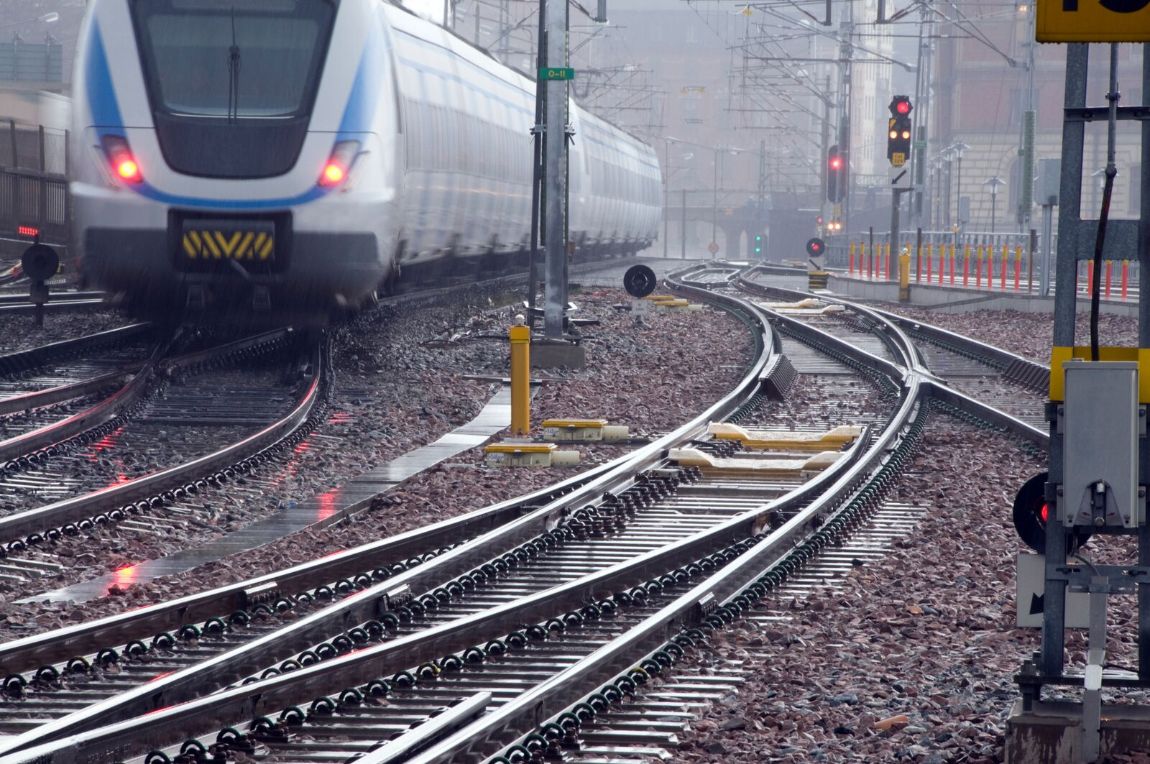
Arnaud Allais presented the final phase of the SuperRail project: the commissioning of the superconducting cable installed at Gare Montparnasse in Paris. A milestone achievement showcasing the journey from design and R&D to production and installation—while addressing both the challenges of the railway network and the stringent safety requirements of one of the busiest train stations in Paris.
More information about superconducting systems:

A revolutionary step for the electrification of railway infrastructure at Paris Gare de Montparnasse with SNCF Réseau:
- Adding 5.3 MW of capacity through two 1500V DC @ 3500A HTS Cables
- Enabling operation of 16 additional railcars, increasing passenger capacity up to 90 million per year
- Achieved without modifying the existing infrastructure, using two spare conduits to install the HTS cables
A perfect illustration of these benefits is the SuperRail project which is co-funded by the French government under the France 2030 program. This pioneering project demonstrates how superconducting cables can improve power availability and reduce costs.
Superconductivity presents significant potential to transform rail networks. By incorporating superconducting cables and fault current limiters, the rail industry can attain exceptional levels of efficiency, capacity and sustainability. This progress aligns with global objectives for decarbonisation and fosters an energy transition.
More information about superconducting systems:
Facilitating the integration of renewable energy sources
Superconducting grids can facilitate the integration of large-scale renewable energy sources, such as offshore wind farms and remote solar power plants, by giving alternatives to conventional technologies to carry out long-distance transmission of bulk power with lower environmental impact and faster deployment for the full system.
More information about superconducting systems:

New generation assets – particularly renewables such as wind and solar – are typically sited in remote locations, which means that extensive deployments of new grid infrastructure are required in previously pristine environments. The most complex and long lead time asset in long distance is the high voltage DC offshore conversion platform. The superconducting cables give two ways to avoid this asset to transport several gigawatts of power of 50 km and more.
The first interesting case is the DC high-power transfer at medium voltage (MVDC). The high current capability of the superconductor allows for a reduction in voltage while maintaining or increasing the power transfer level. The principle is to collect DC from the renewable resources at the most convenient voltage level as both wind and solar generation have natively MVDC along their conversion chain. All the DC current are collected and concentrated into the MVDC export cables.
This case is addressed though the Horizon Europe Project called SCARLET. The project was presented by SuperGrid Institute and highlighted progress made by all partners – including Nexans – particularly in the production of superconducting HTS cable and accessories designed to meet high-power density demands.
More information about superconducting systems:
Superconductivity to shape future digital infrastructures
Maintaining the resilience of critical infrastructure such as data centres is also a top priority, as they are major electricity users and face growing challenges linked to modernization, sustainability, and reliable energy supply. As the digital economy continues its exponential growth, data centres are becoming the backbone of global digital infrastructure.
More information about superconducting systems:

Hyperscale and gigawatt-scale data centres are emerging to meet soaring compute demands, especially driven by AI, cloud services and advanced analytics. These next-generation facilities are pushing the limits of traditional electrical infrastructure, both inside and outside the data centre footprint.
Today’s next-generation data centres aim to reach power levels exceeding one gigawatt. Transitioning from high or medium voltage to low voltage—needed to power CPUs and GPUs—inevitably leads to a significant increase in electrical current to meet the total demand of the data centre. This new generation of data centres therefore requires superconductivity, which offers a uniquely effective solution compared to conventional technologies for addressing these industrial and computing challenges.
More information about superconducting systems:
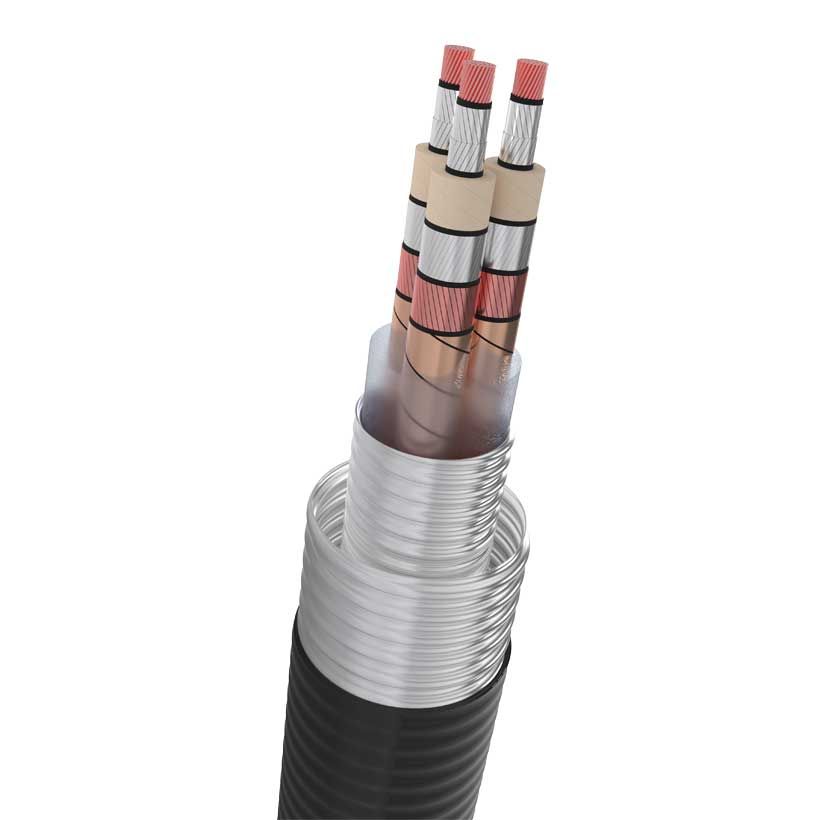
Using conventional cables to carry very high currents—on the order of tens of kiloamperes—requires extremely large conductor cross-sections. In contrast, second generation high-temperature superconducting (2G HTS) cables can achieve current densities up to 500A/mm². This is approximately 500 times higher than the current density of tradittional copper conductors, as defined by standards like IEC 60287 (or NF C33-220 in France) which govern thermal sizing of electrical cables.
This technology provides a solution that is not only more powerful but also much more compact, perfectly suited to the demands of modern data centres where every square millimetre of limited floor space counts. Moreover, choosing a single superconducting cable instead of multiple conventional ones simplifies the network architecture, reducing both complexity and maintenance efforts during interventions.
- Beyond power and compactness, superconducting cables offer major electrical advantages. Their zero electrical resistance means that cable length no longer limits server power delivery. Whether a server is close to or far from the power source, the performance remains unaffected. This contrasts with conventional cables, where longer distances cause voltage drops, reducing the overall efficiency of the data centre.
- Regarding design, superconducting cables incorporate electromagnetic shielding to prevent any magnetic field leakage. This ensures electromagnetic compatibility, allowing these cables to be installed near power electronics and other electrical components without causing or suffering from interference.
- Thermally, unlike conventional cables that require active cooling systems to reduce losses, superconducting cables are housed in vacuum-insulated cryostats. This setup provides excellent thermal isolation without impacting the surrounding environment.
More information about superconducting systems:
“ Superconducting power transmission and distribution is not just an incremental improvement - it is a strategic advancement that addresses the core physical and energy challenges outside and inside the data centres. ”
Faced with increasing demands for low-voltage, high-current supply (6 to 10 kA) in next-generation data centres, high-temperature superconducting cables emerge as the ideal solution. By combining the safety and simplicity of low-voltage systems with the power density and efficiency of superconductivity, HTS cables enable a more compact, flexible and energy-efficient architecture—one that is better suited to the demands of modern, high-performance data centres.
In short, superconducting power transmission and distribution is not just an incremental improvement - it is a strategic advancement that addresses the core physical and energy challenges outside and inside the data centres.
More information about superconducting systems:
Protection and Power Conditioning: enhancing resilience with superconducting fault current limiters
An important but often overlooked advantage of superconducting technology is its role in electrical protection—specifically through the use of Superconducting Fault Current Limiters (SFCLs).
These devices significantly enhance power quality, system resilience and operational safety within data centre environments. In the event of a short circuit or fault condition, SFCLs instantly and automatically limit excessive current without the need for mechanical intervention.
More information about superconducting systems:

Unlike conventional protection devices, which rely on opening a circuit to interrupt current flow, superconducting fault current limiters use the intrinsic properties of superconductors to transition rapidly from a superconducting (zero-resistance) state to a resistive state. This transition happens within milliseconds, allowing SFCLs to absorb and limit the fault current before it can damage downstream equipment.
In the context of hyperscale and gigawatt-scale facilities - where electrical disturbances can have significant operational and financial consequences - SFCLs offer a smart, scalable solution that supports 24/7 reliability, self-healing electrical infrastructure and reduced maintenance requirements.
In short, integrating superconducting fault current limiters into the power architecture provides a modern, automated approach to protection and conditioning—aligning with the needs of next-generation, resilient data centres.
More information about superconducting systems:
Superconducting future ahead
Great opportunities lie ahead with regards potential applications of superconducting technology.
Superconductivity is currently advancing industrial applications, offering signifcant potential to transform diverse sectors from power networks and rail industry to datacentres. By incorporating superconducting cables and fault current limiters, networks and infrastructures can attain exceptional levels of efficiency, capacity and sustainability. Furthermore, the deployment of superconducting technology can facilitate the transition towards a low-carbon society and is poised to contribute significantly to the development of resilient future power grids and infrastructures.
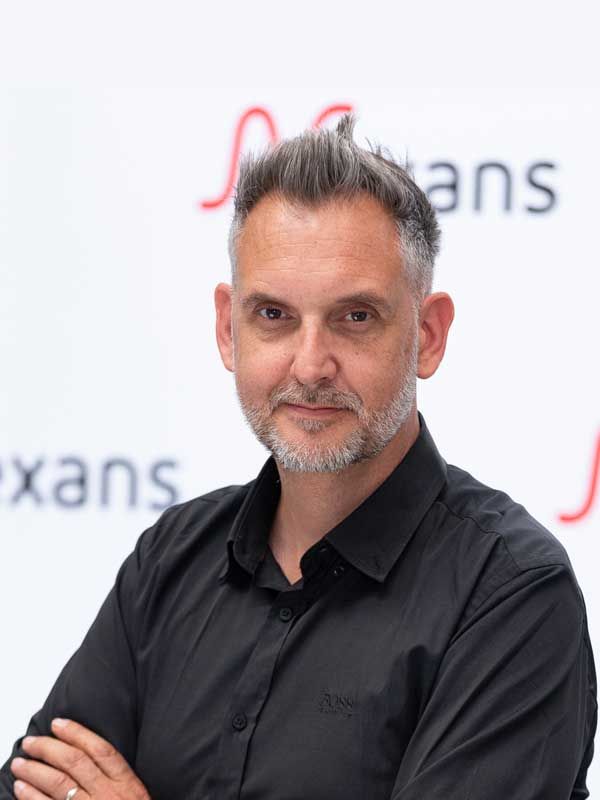
Our websites
Select your country to find our products and solutions
-
Africa
- Africa
- Ghana
- Ivory Coast
- Morocco
- North West Africa
- Americas
- Asia
- Europe
- Oceania
